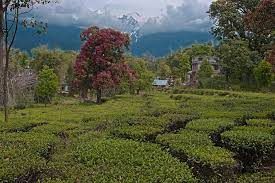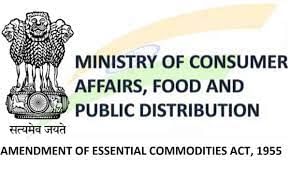UPSC Daily Current Affairs- 30th March 2023 | Current Affairs & Hindu Analysis: Daily, Weekly & Monthly PDF Download
GS-I
Kangra Tea

Why in News?
Kangra Tea from Himachal Pradesh was recently granted the European Geographical Indication (GI) tag.
About Kangra Tea:
- It is a type of tea produced in the Kangra district of Himachal Pradesh.
- It is a high-quality tea that is known for its unique flavour, aroma, and colour.
- It is made from the leaves, buds, and tender stems of the Camellia sinensis species cultivated in the Kangra valley.
- Black tea and green tea have both been cultivated in the Kangra Valley.
- In India, Kangra tea received the Geographical Indication (GI) designation in 2005.
- Features:
- Kangra tea leaves are narrow and have a multi-stemmed frame.
- Green tea has a subtle woody aroma, while black tea has a sweet, lasting aftertaste.
- It has a light colour and a high body in liquor.
Source: The Hindu
Upward Lightning Phenomenon

Why in News?
Brazilian researchers recently succeeded in taking pictures of the Upward Lightning Phenomenon.
About Upward Lightning Phenomenon:-
- Upward lightning is a phenomenon whereby a self-initiated lightning streak develops from a tall object that travels upward toward an overlaying electrified storm cloud.
- For this to happen, storm electrification and the resulting presence of a cloud charge region are enabling factors.
- The vertical elevation of a tall object accentuates the electric field locally on the ground, resulting in conditions favourable for the initiation of an upward streak (called a leader) from a tall object, which can also develop in response to an electric field change created by a nearby preceding lightning flash.
- The process is triggered by the development of the stepped leader
- Stepped leader: a channel of negative charge that travels downward in a zigzag pattern from a cloud, nearly invisible to the human eye) travelling to the ground in a millisecond, leading to an intensification of the positive charge on the ground.
- As the streaks of the stepped leader keep streaking towards the ground, the electrical charges between the leader tips and the tops of tall objects on the ground keep on increasing.
- In the due course, these forces cause the air above these tall buildings or towers to ionise and thereby turn more conductive.
- With the negative charge repeatedly moving toward the ground, the channel of air just above the tall objects turns positively charged, which starts streaking upwards and is called an upward streamer.
- In due course, the negatively-charged, downward-moving stepped leader makes contact with one of the developing positively-charged upwards streamers.
- Upward lightning typically has a lower intensity and duration compared to downward lightning.
- It also has a higher frequency of occurrence during thunderstorms
Risks:-
- Upward lightning can cause damage to structures such as buildings and towers by creating an electrical surge that can overload electrical systems and cause fires or explosions.
- Upward lightning can also pose a risk to aviation, particularly for planes that fly close to tall structures during thunderstorms.
- This can cause electromagnetic interference, affecting communication and navigation systems.
Preventions: –
- To prevent damage from upward lightning, lightning rods and other grounding systems can be installed on tall structures to safely dissipate the electrical charge.
- Additionally, electrical equipment and systems can be designed to withstand lightning strikes and power surges.
Source: Indian Express
GS-II
Higher Education Financing Agency(HEFA)
Why in News?
Recently, a Parliamentary panel has asked the Ministry of Education to make more efforts to ensure the “speedy disbursal” of sanctioned loans by the Higher Education Financing Agency (HEFA).
About Higher Education Financing Agency:
- Higher Education Financing Agency provides financial assistance for the creation of capital assets in premier educational institutions in India.
- It is registered under Section 8 as a Not-for-profit under the Companies Act 2013 as a Union Govt company and as Non–deposit-taking Systemically Important (NBFC-ND-SI) with RBI.
- It was established on 31st May 2017 and is a joint venture of the Ministry of Education, GoI and Canara Bank with agreed equity participation in the ratio of 90.91% and 09.09% respectively
- What are the objectives? The main aim of HEFA is for the development of India’s top-ranked institutions like IITs, IIITs, NITs, IISCs, and AIIMS into globally top-ranking institutions through improvement in their academic and infrastructure quality.
- It is particularly interested in financing the building of educational infrastructure, and R&D infrastructure and thereby enabling the institutions to reach top rankings globally.
Source: Indian Express
Armed Forces (Special) Powers Act (AFSPA)
Why in News?
The Union government has extended the Armed Forces (Special) Powers Act (AFSPA) in Arunachal Pradesh and Nagaland and it has been removed from several areas in Northeast India.
About Armed Forces (Special Powers) Act 1958:
Genesis:
- The genesis of the law can be traced to the Armed Forces (Special Powers) Ordinance 1942 which was enacted by the British to subjugate the rebels in the country during the Quit India movement, particularly in Assam and Bengal .
- The law continues to be enforced in its new format as the Armed Forces (Special Powers) Act 1958.
- The need for the law was required in the 1950s when Naga insurgents resorted to large-scale violence.
Provisions
- Under Section 3, the Central Government or the Governor of the State or administrator of the Union Territory can declare the whole or part of the State or Union Territory as a disturbed area.
- An area can be disturbed due to differences or disputes between members of different religious, racial, language or regional groups or castes or communities.
- Section 4 gives the Army powers to search premises and make arrests without warrants, to use force even to the extent of causing death, destroy arms/ammunition dumps, fortifications/shelters/hideouts and to stop, search and seize any vehicle.
- Section 6 stipulates that arrested persons and the seized property are to be made over to the police with the least possible delay.
- Section 7 offers protection of persons acting in good faith in their official capacity.
- The prosecution is permitted only after the sanction of the Central Government.
Need for the AFSPA:
- The Army believes that the AFSPA is extremely necessary to fight domestic insurgency and preserve the nation’s frontiers.
- Protection of members of the armed forces – It is essential to empower members of the military forces whose lives are continuously threatened by rebels and extremists. Its absence would negatively affect morale.
- The Act and Army regulations offer necessary protections, as outlined below: According to Section 5 of the Act, apprehended civilians must be delivered to the closest police station with the “least feasible delay” and a “report of the circumstances that led to the arrest.”
- Effective Counterinsurgency: Strong legislation is required to combat insurgent groups inside the nation, especially in Kashmir and the Northeastern area.
- The presence of proxy groups in troubled regions necessitates the use of extraordinary means to break this connection.
- As the armed services confront asymmetric warfare including raids, ambushes, mines, and explosives, extraordinary abilities are also required.
Arguments against AFSPA:
- Violation of the Human Rights: The exercise of these extraordinary powers by armed forces has often led to allegations of fake encounters and other human rights violations by security forces in disturbed areas while questioning the indefinite imposition of AFSPA in certain states.
- Human rights violations in AFSPA areas are not inquired into and followed by adequate action. Thus, it is against the principle of natural justice.
- Violation of the right to remedy: Section 6 of the Act “immediately takes away, abrogates, frustrates the right to constitutional remedy which has been given in article 32(1) of the Constitution.
- AFSPA was outside the powers granted in the Constitution since it was declaring a state of emergency without following the Constitutional provisions for such a declaration.
- Ineffectiveness of the Act: Critics argue that this act has failed in its objective of restoring normalcy in disturbed areas although being in existence for about 50 years.
Present Status:
- AFSPA now applicable fully only in 31 districts of 4 Northeast states and partially in 12 districts.
- The Act is applicable in the entire state of Jammu and Kashmir and States include Nagaland, Assam, Arunachal Pradesh, Manipur.
Way Forward:
AFSPA is required to counter insurgencies and lack of development in the Northeast region is also a major reason for the insurgency therefore the Government should take urgent steps to create new opportunities for growth and development. However, there needs to be a comprehensive and serious periodical review undertaken by the Centre till the entire North-east is freed from the tentacles of AFSPA.
Source: Indian Express
Governance of Essential Commodities under Essential Commodities Act, 1955
Why in News?
Recently, the government announced the formation of a committee to monitor the stock of tur dal held by importers, mills, stockists, and traders in order to prevent hoarding and speculation.
- Tur is a long-duration (180 days) pulses variety that is grown in rainfed conditions. It is grown in many states of India including Karnataka, Maharashtra, Uttar Pradesh etc. India meets about 10-12% of its domestic consumption through imports.
About Essential Commodities:
- Essential commodities are not specifically defined in the Essential Commodities Act, 1955, but Section 2(A) of the act underlines that an “essential commodity” means a commodity mentioned in the Schedule of the Act.
- The Union government derives its power to add or remove a commodity specified in the schedule from this act.
- If necessary, the Central Government in consultation with state governments can notify an item as essential.
- Face masks and sanitisers were added to the list on March 13, 2020 in the wake of the COVID-19 outbreak.
- The government can control the production, supply, and distribution of the declared essential commodity and can also impose a stock limit.
About Essential Commodities Act, 1955:
- The Centre has invoked the Essential Commodities Act of 1955 to ask States to monitor and verify the stocks available with such traders.
- Under the EC Act of 1955, if the Central government thinks that it is necessary to maintain or increase supplies of any essential commodity or make it available at fair prices, it can regulate or prohibit the production, supply, distribution and sale of that commodity.
- The Centre has the power to add or remove any commodity in public interest from this list of essential commodities.
The EC (Amendment) Bill 2020:
- It aims to remove fears of private investors of excessive regulatory interference in their business operations.
- The freedom to produce, hold, move, distribute and supply will lead to harnessing economies of scale and attract private sector/foreign direct investment into the agriculture sector.
- It will help drive up investment in cold storages and modernization of the food supply chain.
Issues Related to Essential Commodities Act 1955:
- The Economic Survey 2019-20 highlighted that government intervention under the ECA 1955 often distorted agricultural trade while being totally ineffective in curbing inflation.
- Such intervention does enable opportunities for rent-seeking and harassment.
- Rent-seeking is a term used by economists to describe unproductive income, including from corruption.
- Traders tend to buy far less than their usual capacity and farmers often suffer huge losses during surplus harvests of perishables.
- This led to farmers being unable to get better prices due to lack of investment in cold storage, warehouses, processing and export.
- Owing to these issues, the Parliament passed the Essential Commodities (Amendment) Bill, 2020.
- However, due to farmers’ protest the Government had to repeal this law.
Way Forward:
The ECA 1955 was brought when India was not self-sufficient in food grains production. However, now India has become surplus in most Agri-commodities, and the amendments to the ECA 1955 is an important step by the government to achieve its target of inflation of Agri commodities and ease of doing business in the market.
Source: Financial Express
GS-III
Vemband Lake
Why in News?
Recently, the National Green Tribunal (NGT) imposed a penalty of Rs 10 crore on the Kerala government for failing to protect the Vembanad and Ashtamudi lakes.Recently, the National Green Tribunal (NGT) imposed a penalty of Rs 10 crore on the Kerala government for failing to protect the Vembanad and Ashtamudi lakes.
About Vemband Lake:
- Vemband is the largest lake in Kerala and the longest Lake in India.
- It is also known as Vembanad Kayal, Vembanad Kol, Punnamada Lake (in Kuttanad) and Kochi Lake (in Kochi).
- The lake has its source in four rivers, Meenachil, Achankovil, Pampa and Manimala.
- It is separated from the Arabian Sea by a narrow barrier island and is a popular backwater stretch in Kerala.
- Vallam Kali (i.e Nehru Trophy Boat Race) is a Snake Boat Race held every year in the month of August in Vembanad Lake.
- In 2002, it was included in the list of wetlands of international importance, as defined by the Ramsar Convention.
- The Government of India has identified the Vembanad wetland under the National Wetlands Conservation Programme.
- The Kumarakom Bird Sanctuary is located on the east coast of the lake.
Source: DownToEarth
DNA profiling of Elephant
Why in News?
DNA profiling of 270 captive elephants has been completed recently.
About DNA profiling of Elephant:-
- DNA profiling is a method to differentiate between individuals of the same species using samples of their Deoxyribonucleic acid (DNA).
- DNA profiling of elephants was started in August 2022 for Gaj Soochna App.
- This will act as the ‘Adhaar card of captive elephants’.
- Gaj Soochna: this is a mobile application developed to record the details of captive elephants across India.
- The centralized database will include physical and genetic information of every captive elephant individual in the country.
- Gaj Soochna: this is a mobile application developed to record the details of captive elephants across India.
- The DNA profiling process is being carried out in collaboration with the Wildlife Institute of India.
Benefits:-
- The forest officers can identify each elephant and track it.
- Therefore its transfer, which often happens in the case of captive elephants, can be recorded.
- More focus can be put on elephant care with unique information about elephants.
About Project Elephant:-
- It was launched in 1992.
- It is a Centrally-Sponsored Scheme.
- Objective: to protect elephants and improve their habitat and corridors, reduce Human-elephant conflict and ensure their welfare.
- Implementation: Under this project, financial and technical support is given to wildlife management efforts by states for their free-ranging populations of wild Asian Elephants.
- Project elephant is mainly implemented in 16 States.
, Unlike Project Tiger, Project Elephant looks at the welfare and health of captive elephants as well.
Conservation status of Asian Elephant:-
- IUCN: Endangered
- Wildlife (Protection) Act, 1972: Schedule I.
- CITES: Appendix I
Source: Indian Express
|
38 videos|5293 docs|1118 tests
|
FAQs on UPSC Daily Current Affairs- 30th March 2023 - Current Affairs & Hindu Analysis: Daily, Weekly & Monthly
| 1. What is the significance of GS-I, GS-II, and GS-III in the UPSC exam? |  |
| 2. How can I prepare for GS-I, GS-II, and GS-III in the UPSC exam? |  |
| 3. What are the subjects covered in GS-I, GS-II, and GS-III of the UPSC exam? |  |
| 4. Are there any specific strategies to score well in GS-I, GS-II, and GS-III of the UPSC exam? |  |
| 5. Can I choose to specialize in a particular subject for GS-I, GS-II, and GS-III of the UPSC exam? |  |





















